Good-bye Mosel 😢
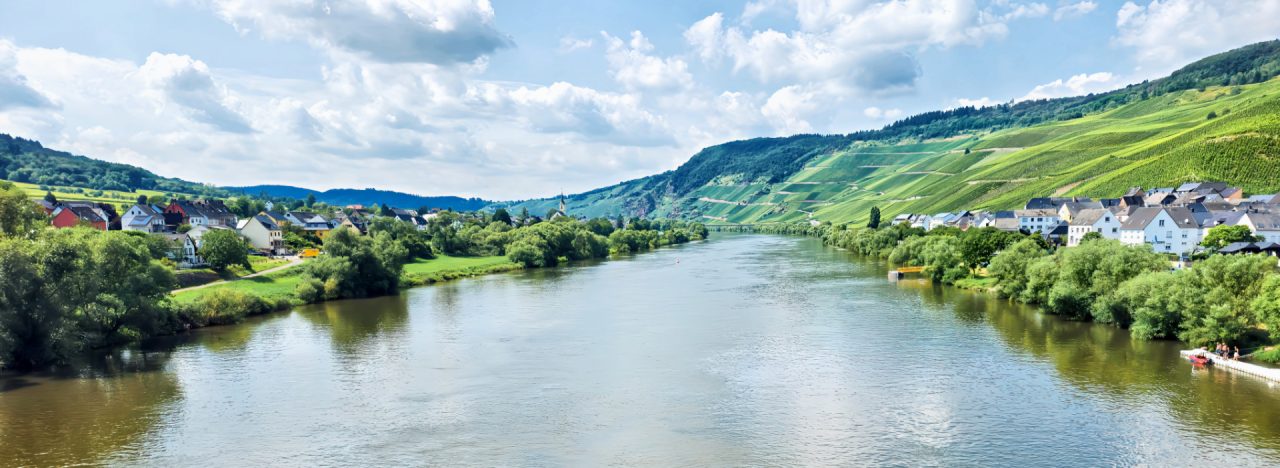
Our plan for a brief detour to the Mosel River turned into a month-long adventure that we could easily have extended. There are all sorts of well-developed cycle paths in the area that we would love to have explored and many interesting small villages to visit. Originally, we intended to cycle down the Mosel and then return to Koblenz to continue along the Rhine. However, plans changed. Continuing on the Rhine we would have started in Koblenz and quickly passed through Bonn, Cologne and Dusseldorf. These are all big cities. We believe that the entire area is very industrialized and there are very few campgrounds in this area that are really close to the Rhine. I didn’t want to stay a long way from the Rhine and I didn’t want to ride through built-up areas for such a long distance. Mike and I really liked the Mosel with its simple, slower style. Its attractive small villages and bike paths that often ran beside the river and through the vineyards are just lovely.
We cycled along the Mosel from Koblenz to Luxembourg. Next, we plan to ride from Luxembourg to Brussels, which we reached a few years ago after cycling from the North Sea. I will miss seeing Cologne, but we really enjoy the smaller towns and the more rural settings.
Contrary to what you might think, we don’t live on our bikes, my buttocks and often the weather, wouldn’t agree to that. We are still listening to self-guided audio tours. One of them led us to the town of Kirn. After a large fire hundreds of years ago, the town rebuilt using slate as a fire prevention measure; a solution that I understand would be too expensive today. Cladding buildings with fire resistant materials is worth considering given our current massive forest fires and climate challenges.
Another interesting tidbit that we learned was that Hermes was the God of traders and thieves. Who knew that thieves had a god?
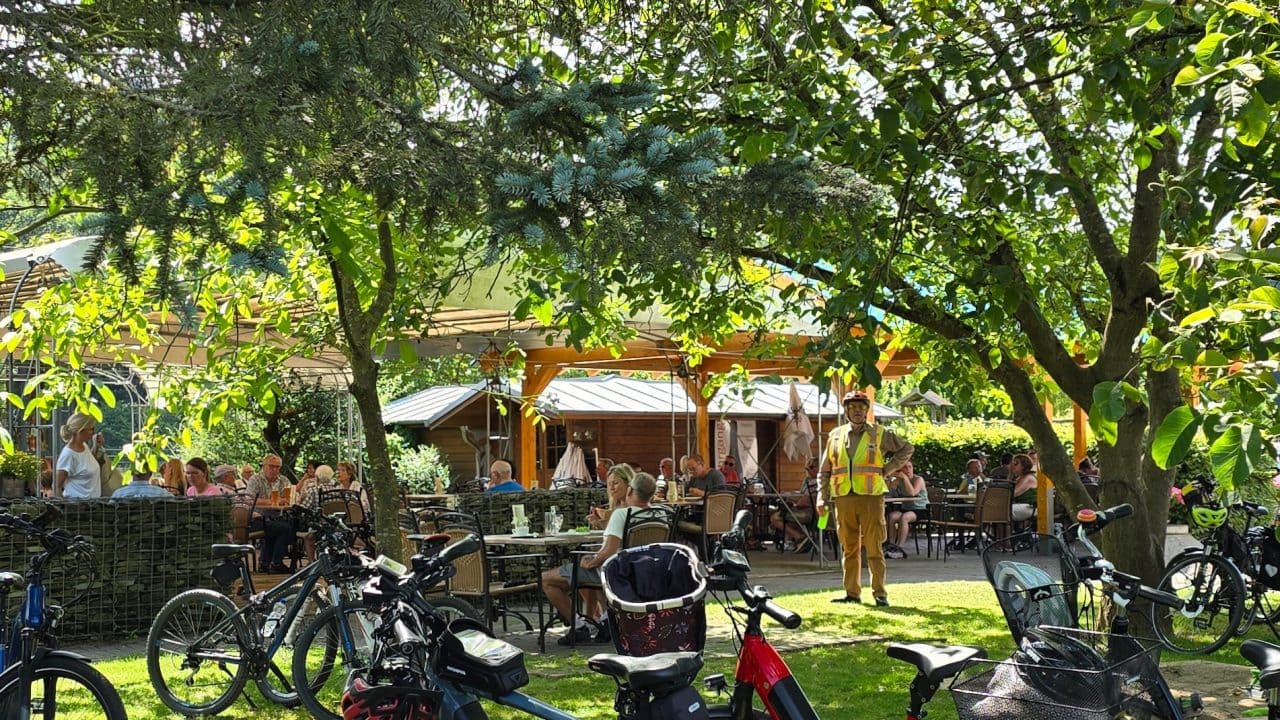
Mike and I discovered the Maare-Mosel cycle path, which runs from the Mosel River north into a volcanic rock region. Following an old railway line, this path is well-paved and marked for cyclists, with interesting remnants of the railway like old signs, barriers and tunnels. The route slopes dramatically down towards the Mosel, and naturally, we chose to cycle downhill. It was very nice to see this café for cyclists, right on the cycle path. It is this type of infrastructure that really makes these journeys easy and fun.
As I talked about in the last post, Mike and I have been wanting to get our boat inflated and take some rides on the Rhine and the Mosel. A deciding factor in selecting our campground on the Mosel was its boat ramp. We paid two sets of mechanics to work on the motor which hadn’t been used in three years. You might remember that the cells of the boat had ruptured in the heat and three boat repair places refused to fix them. Mike then patched them himself, then more ruptures appeared, he patched them and more appeared and he finally gave up. We put the boat in the garbage and noticed that a worker on the campground had retrieved it. He said that he thought he could fix it. Best wishes to him. As you can imagine, we are very disappointed.
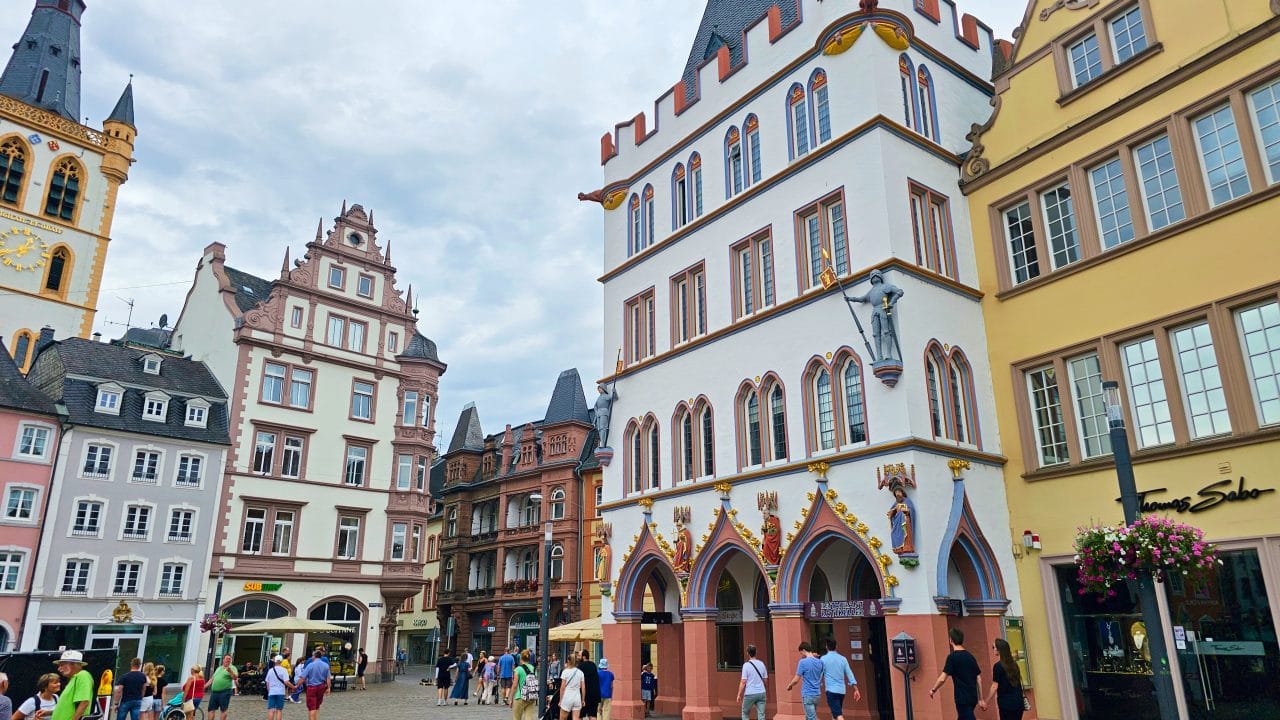
In Trier, we noticed a peculiar door 3 metres above the ground, similar to Newfoundland’s “mother-in-law doors”. Historically, this house, called The Ephiphany House, was accessed by a retractable ladder for safety during attacks.
Trier, Germany’s oldest city, was founded by the Celts in the fourth century BC and later developed by the Romans. By the fourth century AD, it was one of the Roman Empire’s four capitals, home to up to 100,000 Romans. During the Middle Ages, Trier’s archbishop-elector was a powerful figure, one of seven archbishops, or more accurately, seven prince-electors, who played a crucial role in the Holy Roman Empire. These seven had the exclusive right to elect the King of the Romans, who would subsequently be crowned as the Holy Roman Emperor by the Pope. The Trier archbishop then crowned the new king/emperor. The things we learn on our travels.
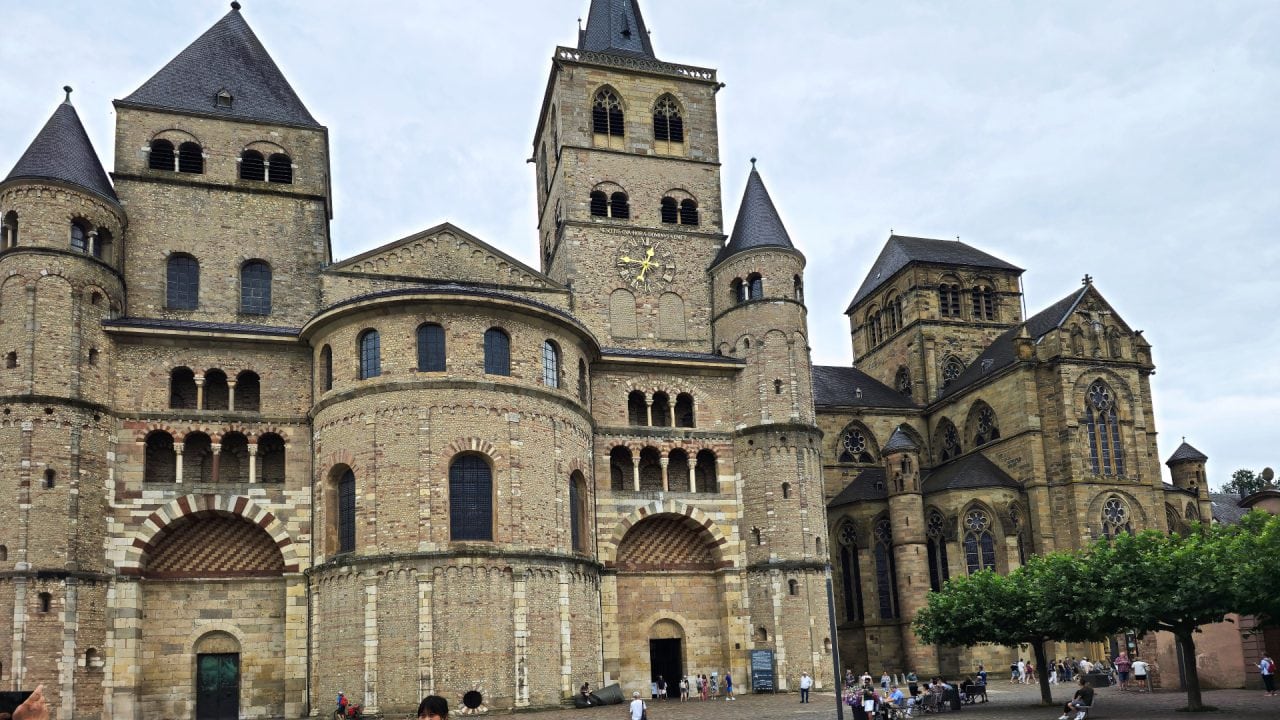
Above St. Peter’s Cathedral’s tower clock an inscription reads “You do not know what time the Lord is coming.”. I thought that was pretty good. Within the cathedral is the Chapel of the Holy Robe. Stored there is the Holy Robe, believed to be the robe Jesus wore during his crucifixion. Pilgrimages to view the Holy Robe have been held irregularly since 1512.
Interestingly, a second church, built between 1230 and 1260, shares a wall with the cathedral.
Another town we toured, Brauneberg, had a church that was split in two. It had two separate entrances with two completely separate interiors. The Protestant and the Catholics shared the church for along time. I don’t know why, but in the 1950s a wall was built to divide the church in two. The division was done to match the proportions the Protestants and the Catholics each originally paid for the church.
We obtained much of our information about the towns along the Mosel from an audio tour connected to the Mosel cycle path. As we cycled along, every so often our phones would beep and shortly thereafter start talking to us. This is how we learned about the sun dial in the previous posting, the church in Brauneberg and much more. Occasionally the app would suggest that we leave the path for a short detour. On these occasions it would take us to something interesting near the path but not on it. One example is this remarkably well-preserved wine press from the Roman times. Once a year the wine press is used during the annual Wine Press Festival. We saw quite a few Roman remains thanks to this app Lauschtour that we might not have found on our own.
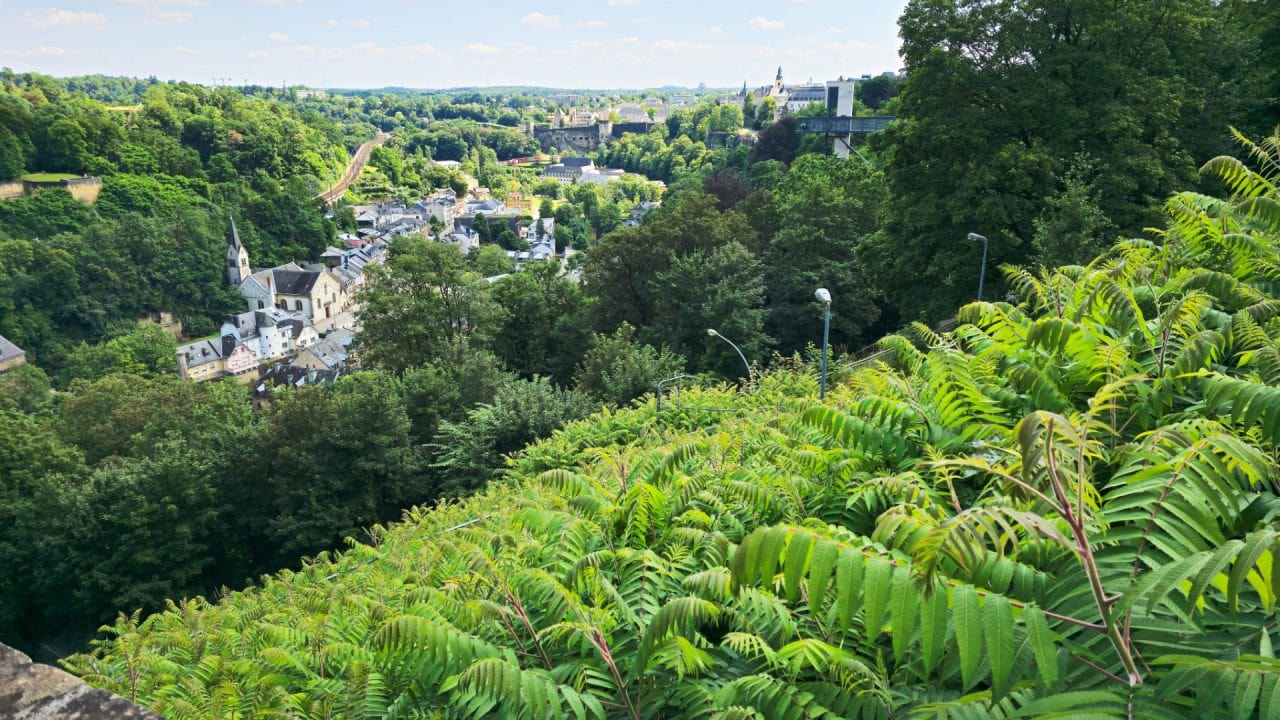
Our Mosel adventure concluded near Luxembourg, a city we had previously visited. As cyclists who love connecting different routes, Luxembourg had originally marked the end of this leg. However, our plans have changed, and we’ll now pedal on to Brussels, connecting with a previous cycling route or orphan track, as Mike calls them.
The photo captures Luxembourg City from a distance above. We cycled through the town of Wasserbillig, where we stumbled upon a quirky statue of a fisherman enjoying some company. Europe seems to have a knack for turning everyday moments into art, and this one caught Mike’s eye.
Mike and I had lunch in Luxembourg City. We were in the main tourist area and a single cheeseburger with fries and nothing else was 28€ or $42 Cdn. You could have picked me up off the floor. I will say that later in rural Luxembourg we saw cheeseburgers for 7€ ($10) and even later for 5€. They didn’t look quite as good as the one in the tourist centre but they would have been my choice any day.
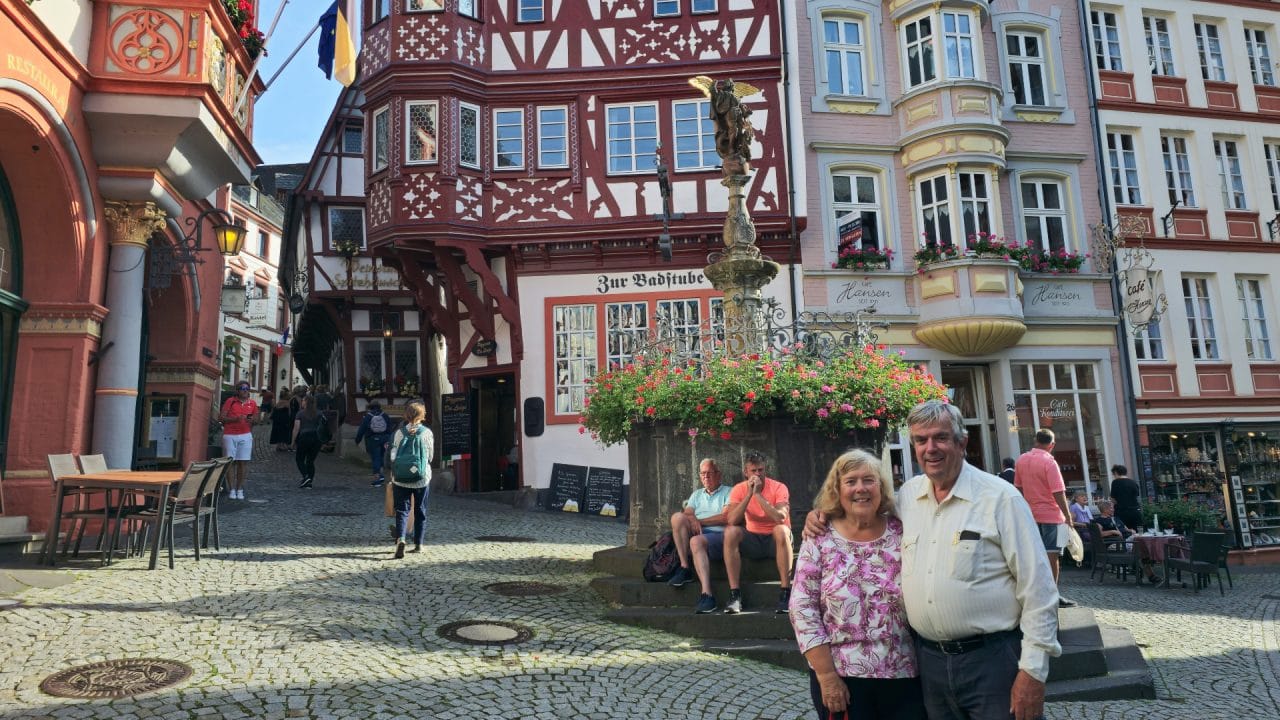
A highlight of our time on the Mosel was having friends from Norway join us in our campground for four nights. We try and get together about once every year. The first day they were with us, it was raining on and off, so we took the car to show them Trier. As much as we enjoy cycling, we couldn’t have even considered this Europe trip without a car.
Since we last saw Elin & Helge, they have also acquired electric bikes which have become increasingly popular since we started using ours in 2018. I think that the majority of bikes we see are now electric bikes, at least those not ridden by the spandex group.
Elin & Helge had their bikes with them and we cycled up and down part of the Mosel. The pictures of us were taken in Bernkastel-Kues.
In the town of Kröv, luckily near the end of one ride, we enjoyed some Riesling wine tasting. Riesling is by far the major wine produced in this area. In the photo gallery is a picture of the four of us with our wine tasting samples. My idea of wine tasting is a few small sips of different wines. The restaurant’s idea of a “tasting” was two thirds of a litre per person (actually Mike and I shared one order). I thought this was rather excessive for a tasting, but you have to remember that I am not really a wine drinker.
Mike and I first visited the city of Koblenz before we took our detour on the Mosel. I left it out of my postings because, at that time, I thought that we were going back there to continue our ride up the Rhine. I thought as well, that I might get some new or improved photographs. Well now that that isn’t happening so I will try and post a shorter article just on Koblenz in the near future. It is a very historic town. For those of you who wanted to hear about the big cities on the Rhine, I apologize. Mike and I have just landed in Belgium and plan on cycling up to Brussels. We are not on the river which was so lovely but we are surrounded by trees and within walking distance to a small town so it is all very nice. Bye for now.
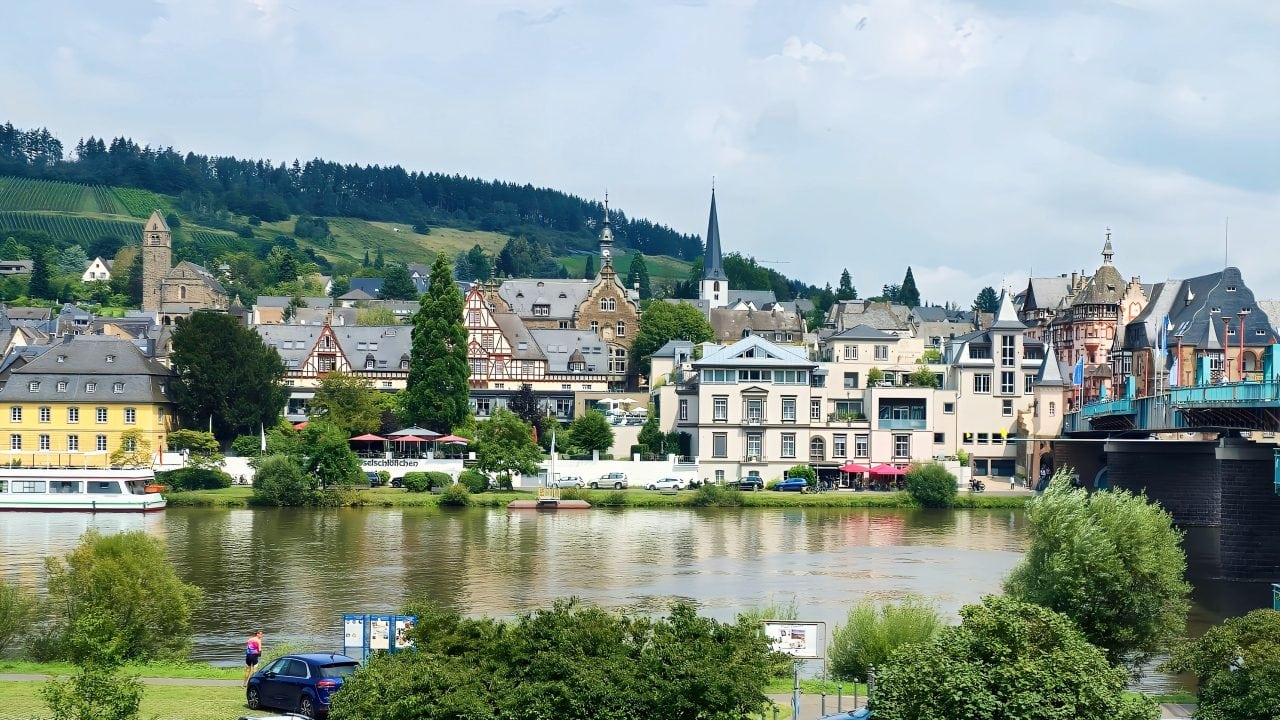

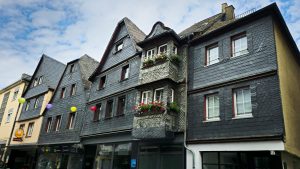
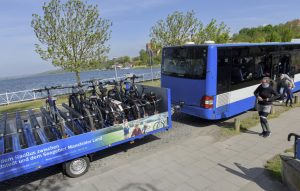
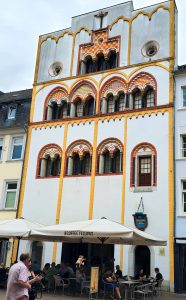
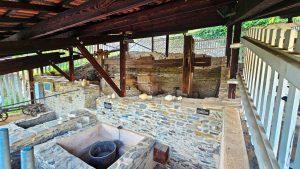
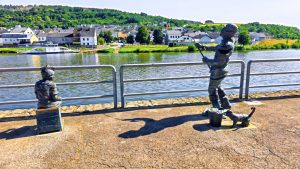
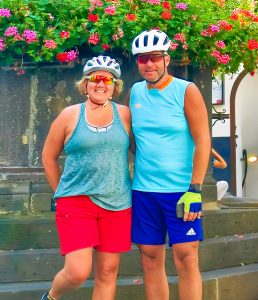
Leave a Reply